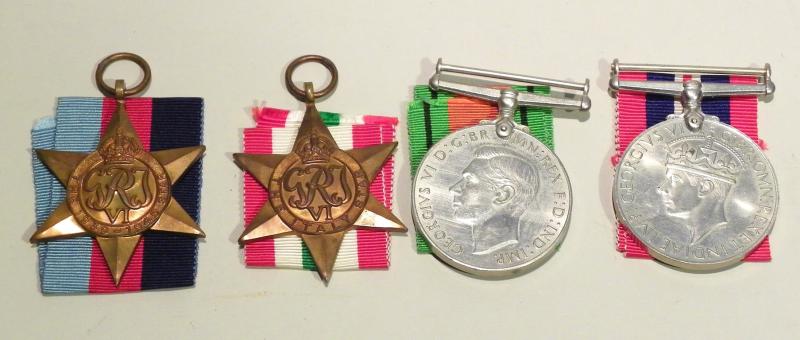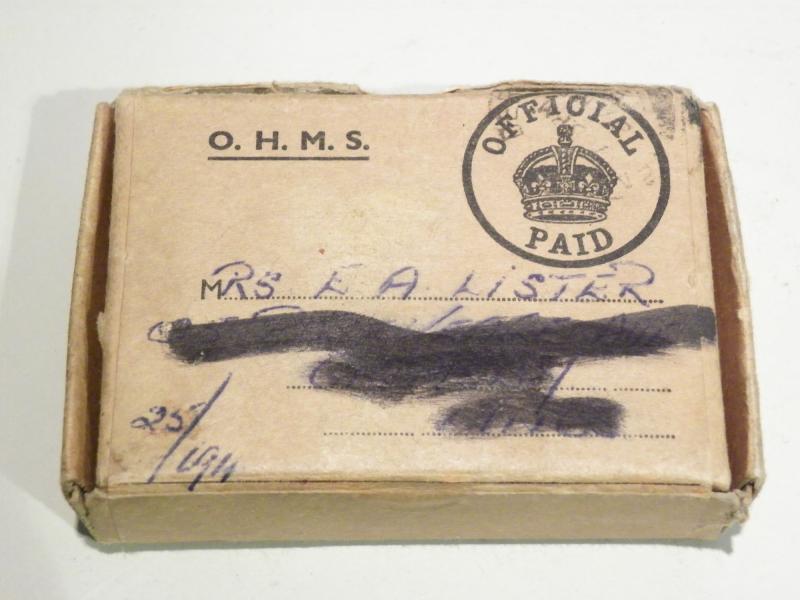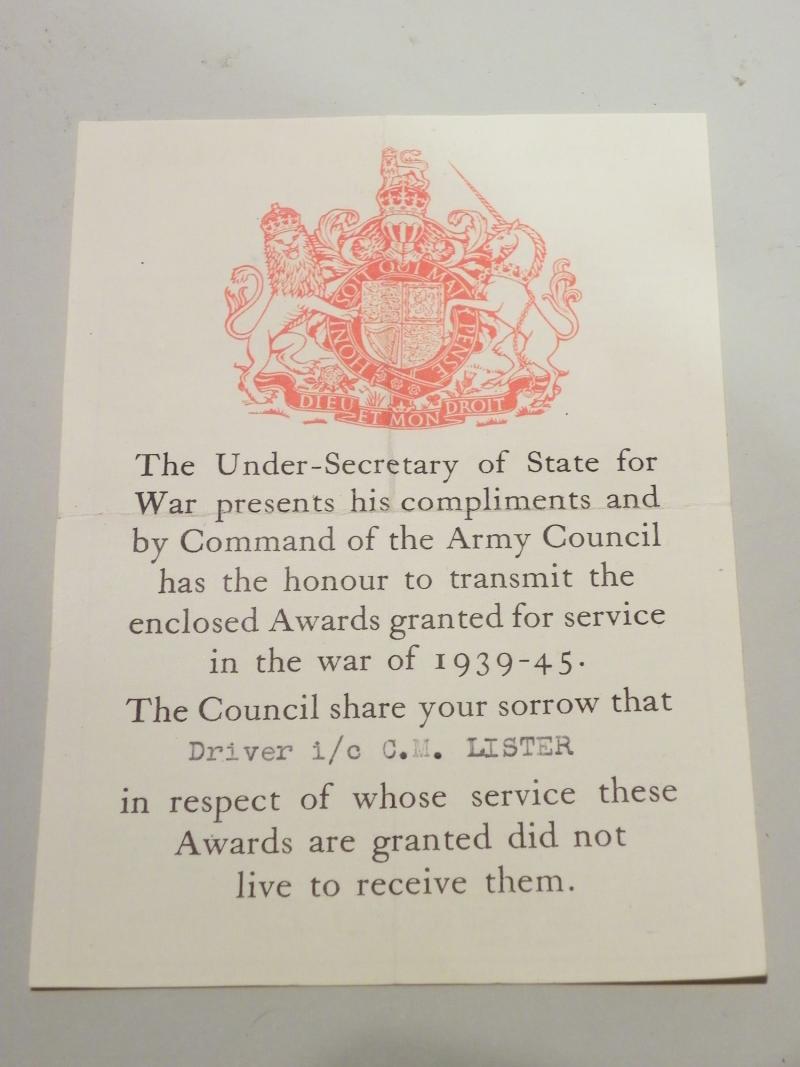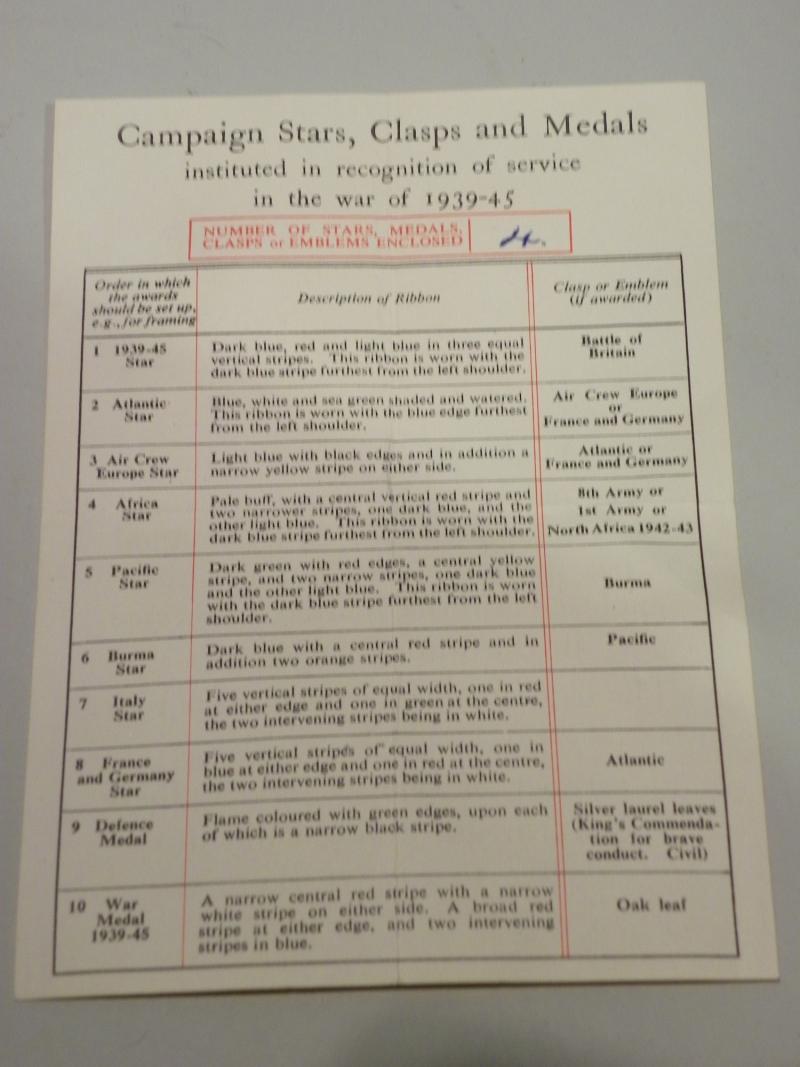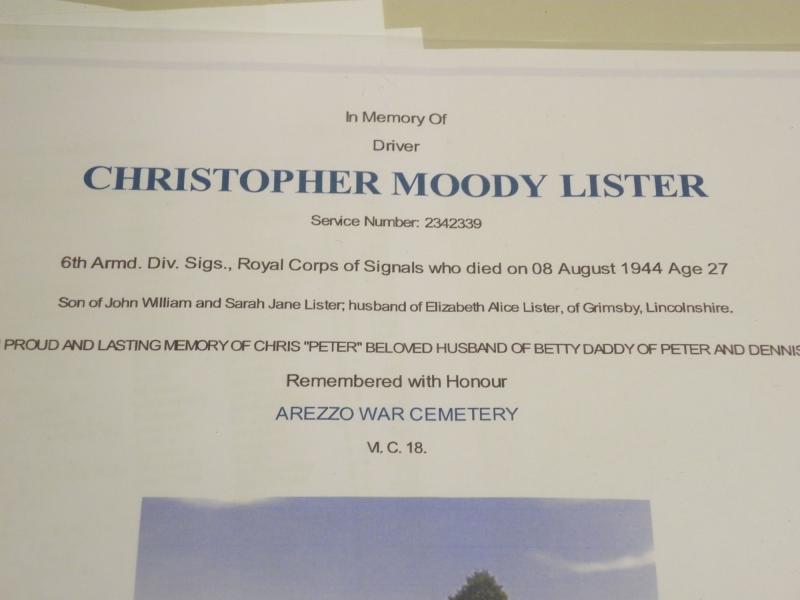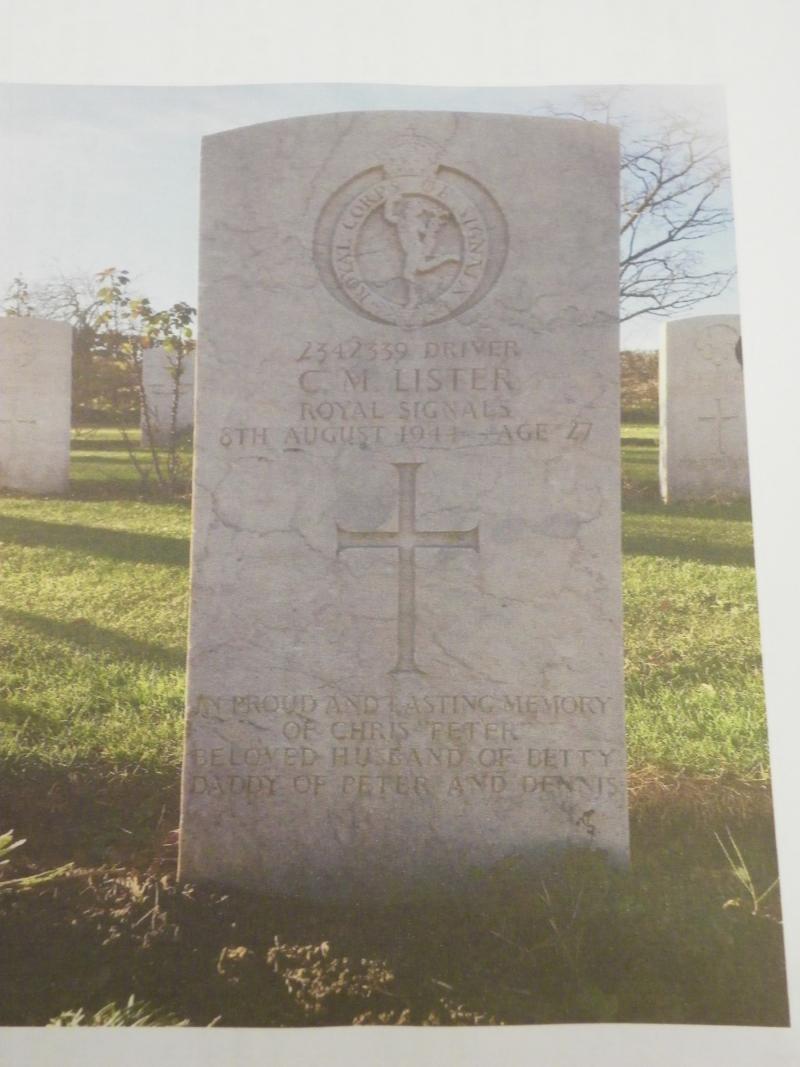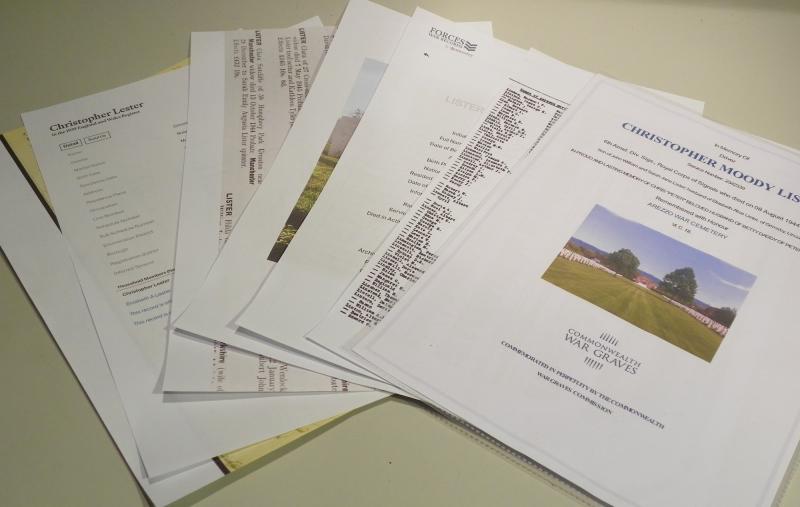WW2 Group 4 to Dvr Lister Royal Corps of Signals KIA Italy 1944.
A 1939/45 Star. Italy Star, Defence medal and 193945 war medal, all in box of issue with condolence medal slip named to Driver 1/c C. M. Lister.
Christopher Moody Lister was born in Lincolnshire on 28th November 1916 and lived in Grimsby before the war. He was married to Elizabeth (Betty) Anne in 1937 and was employed as a Motor Driver, probably goods vehicles.
He served with the Royal Corps of Signals as a driver serving in the 6th Armoured Division 8th Army. As he is not entitled to the Africa star, I can only surmise he was a late volunteer or was drafted after 1942.
Each armoured division has a divisional signals corps, a headquarters and at this point in the war, with four squadrons. They set up key communications between the division’s commander, his infantry brigades and divisional artillery. They were trained in wireless use, laying telephone lines and despatch riding. As a driver Lister would have transporting wireless and communication equipment to the front line and base of operations.
The division arrived in Italy on 18th March 1944 and came under the command of XIII Corps and the first battle for the division was in the Liri Valley between 18th May and 30th May 1944. Next, it took part in the battle for Arezzo between 4 and 17 July 1944, and then the advance to Florence from 17 July 1944 to 10 August 1944 under the command of XIII Corps.
The battle of the Arezzo Line (3-18 July 1944) saw the Germans fight a delaying action along a line that protected the ports of Livorno and Ancona, winning them precious time to improve the fortifications of the Gothic Line. In the aftermath of the Allied breakthrough at Cassino and the fall of Rome on 4th June, the Germans were in full retreat back towards the Gothic Line in the northern Apennines. Marshal Kesselring attempted to set up a series of defensive positions, in the hope that these would delay the Allies long enough for the defences of the Gothic Line to be completed. The first of these, the Dora Line, was brushed aside in mid-June, but the Germans had more time to work on the Tresimeno or Frieda Line. The Germans made a determined attempt to hold the Frieda line for as long as possible, but it had been too costly, and only gained them two weeks. As a result, Kesselring decided to use the next series of lines for delaying actions only, holding each line for long enough for the bulk of his men to reach the next line back. The Germans would then make a stand on the Gothic Line in the northern Apennines.
The next line was the Arezzo Line, which cut across Italy to the south of the key ports of Livorno and Ancona and the communications centre of Arezzo, not far to the south-east of Florence. This line fell into three largely separate sectors.
The eastern part of the line, on the Adriatic, was along the Musone River, 12 miles south of Ancona, where it would be attacked by the advancing Polish 2nd Corps.
The central section of the line, facing the part of the Eighth Army operating west of the Apennines, was held by the 15th Panzer Grenadier Division, 334th Infantry Division, 1st Parachute Division and the Hermann Goering Division, formed into the 76th Panzer Corps. These troops defended a series of heights that ran west from Monte Castiglione Maggiore to Castello di Brolio, twenty miles west of Arezzo, running around the edge of the valley of the Chiani River. This flows south from a point south-west of Arezzo, runs the west of Lake Trasimeno, and into the Tiber. The Germans thus had yet another strong defensive position in high ground.
In the west the line began at Rosignano Solvay, 12 miles to the south of Livorno, and cut across a series of valleys that ran north-south parallel to the coast, forcing the American Fifth Army into equally difficult advances along ridge lines.
The British 13th Corps came up to the new defensive lines on 5-7 July. The advance stopped with the 36th Armoured Brigade of 6th Armoured Division only three miles to the south of Arezzo, but it was clear that more troops would be needed to get through the new German defensive line. When 13th Corp reached the new line it was arrayed with the 6th Armoured Division on the right, British 4th Infantry Division in the centre and the South Africa 6th Armoured Division on the left. It was soon clear that reinforcements would be needed. The fresh 4th Indian Division had already been committed to the advance in the upper Tiber, east of Arezzo, where it was posted next to the 10th Indian Division. This only left the 2nd New Zealand Division, which had been put into the reserve ready for the attack on the Gothic Line, but it was now needed at the front, and was installed between the 6th Armoured and 4th Infantry Divisions.
The Germans defended their position stubbornly on 15th July, but withdrew overnight. Early on 16th July the 26th Armoured Brigade, 6th Armoured Division, was able to move into the upper Chiana valley to the west of Arezzo and advanced towards the city and the upper Arno. By the end of the day the British and New Zealanders had crossed a stretch of the Arno twenty files miles from Florence and were ready to advance north towards the next German defensive position, the Arno Line. Arezzo was quickly turned into the Eighth Army’s main railhead in the northern Apennines, and was used to support the advance towards the Arno and the early attacks on the Gothic Line.
It was in this action that Chris Lister was probably severely wounded and sadly died on 8th August 1944.
He is now remembered with honour at the Arezzo War Cemetery Italy.
The medal box of issue was named and addressed, although itnow has been blanked out. The medals are in perfect condition and have never been out of the box. Included is various copied research confirming the above.
Code: 29438
145.00 GBP


